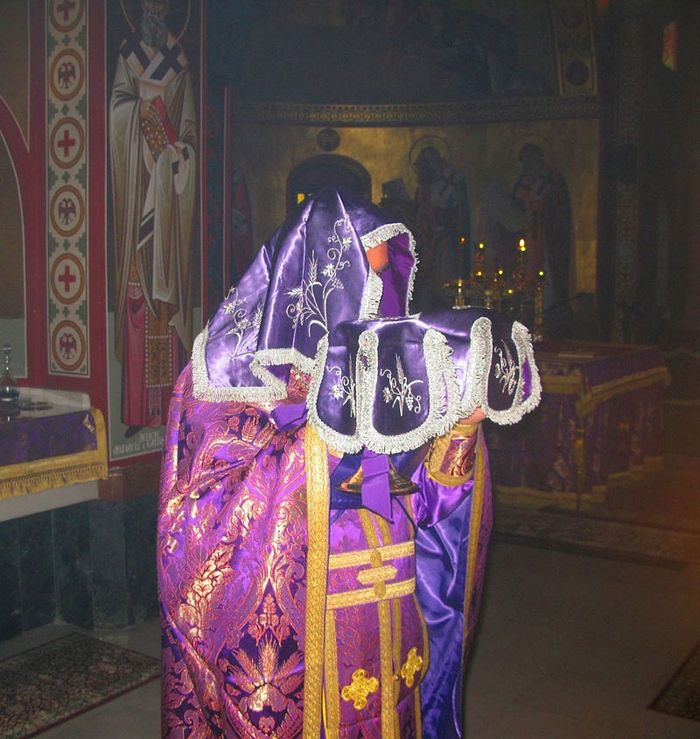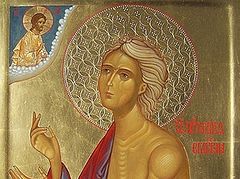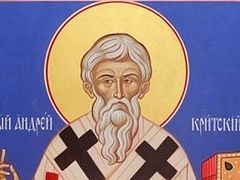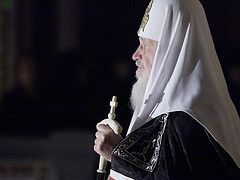Source: Antiochian Orthodox Christian Archdiocese of Australia, New Zealand and the Philippines
March 9, 2016
This Sunday is the fourth of the Sundays which prepare us for Lent. It ends, and is the last day of this period of preparation. From the following day, Monday, we shall be in Lent itself. This Sunday is called “Cheesefare Sunday “because, beginning with the next day, the tradition of the Church is that we should abstain from eggs, milk, butter and cheese.
The Saturday proceeding this Sunday is dedicated to the memory of those saints, men and women, who have given themselves to the ascetic life. At the threshold of Lent, we honour them as inspirers and intercessors in this difficult way of penitence.
The Monday that follows “Cheesefare Sunday” is the first day of Great Lent itself. We have now begun on this succession of forty days which prepare us for the time of the Passion and for the time of Easter. But before going into the details of these weeks of Lent, let us give a little time to the consideration of some of its general characteristics.
The first of these characteristics is, of course, the fast. One cannot ignore or treat the question of fasting from some food lightly, and we have devoted a special note to this. The Fathers of the Church and the collective conscience of the faithful have discerned clearly the spiritual value, a value which is both penitential and purifying, of abstention from certain foods. It would, however, be a serious mistake to think that this abstention constituted the only observance necessary to Lent. Bodily fasting must be accompanied by another fast. In the first Centuries the discipline of the church forbade participation in feasts and attendance at public festivals. This discipline has perhaps become weakened, and is not presented to believers quite as forcefully as in the times of the Fathers. All the same, it remains as a precious indication of the spirit, the intention of the Church. But most surely, this intention is that during Lent we exercise a much stricter control over our thoughts, our words and actions, and concentrate our attention on the person of the Saviour and what He requires of us. Almsgiving is also one of the forms of Lenten observance that the Fathers recommended most highly. A fast that is pleasing to God is therefore, a “whole” which cannot be separated into inner and outward aspects; of the two the former are certainly the most important.
A second feature of Great Lent lies in certain characteristics of ritual, and we will now say some few words about these:
First of all, there is the reciting of the “Great Compline”. We know that the office of Compline is the last of the daily offices. Ordinary compline, or little compline, is a fairly short office. But on Monday, Tuesday and Wednesday and Thursday of Great Lent, is replaced by great compline, with a fairly long reading of psalms and troparia amongst which will be noticed a long biblical prayer.
Furthermore, the liturgy which is celebrated on Sundays during Great Lent is not the usual liturgy attributed to St. John Chrysostom. It is the liturgy attributed to St. Basil, Archbishop of Caesarea, in the fourth century. This liturgy is longer than that of St. John Chrysostom and the text is sometimes slightly different in certain passages, it has an archaic and moving quality.
On Wednesday and Friday during the Great Lent, the liturgy called the “presanctified” is celebrated, that is to say the liturgy of which the holy gifts have been consecrated in advance. It is not a Eucharistic liturgy in the full sense, as there is no consecration. It is a communion service in which the priests and congregation take communion with the elements which were consecrated during the previous liturgy of St. Basil on Sunday. The liturgy of the presanctified is added on to vespers. That is why, in principle, it should be celebrated in the evening. It includes certain psalms, certain special biblical readings, and certain prayers borrowed from the liturgy of St. John Chrysostom. The latter is celebrated every Saturday morning.
On Friday afternoon during Great Lent the hymn called the “Akathist” is recited or sung. It is a long poem of praise to the most Holy Virgin and Mother of our God. It comprises twenty-four stanzas set out in alphabetical order and broken up into four portions. These portions are read one after another, one each Friday, during the first four Fridays of Lent. On the fifth Friday, the akathist is read in its entirety.
Finally, and perhaps above all, the admirable prayer attributed to St. Ephraim must be mentioned. In this, neither poetry nor rhetoric (which are not lacking in the compositions we have just spoken of) play any part. We are here faced with a pure upsurge of the soul, short, sober and full of ardour. This prayer accompanied by prostrations, is said for the first time of the evening of the Sunday which immediately precedes Lent (the evening service being counted as already belonging to Monday the first day of Lent). It is repeated during most of the Lenten services, especially in the liturgy of the presanctified.This is its text:
“O Lord and Master of my life, give me not a spirit of sloth, vain curiosity, lust of power, and idle talk. But give to me, Thy servant, a spirit of chastity, humility, patience and love. Yes! O Lord and King, grant me to see my own fault and not to judge my brother, for blessed are thou unto the ages of ages. Amen."
This prayer sums up all that is essential in spiritual life. A Christian who used it constantly, who nourished himself from it during Lent, would be at the simplest and best school. Even someone who restricted himself to repeating and meditating on these words. “Lord and Master of my life”, would enter deeply into the reality of the relationship between God and the soul, the soul and its God.




